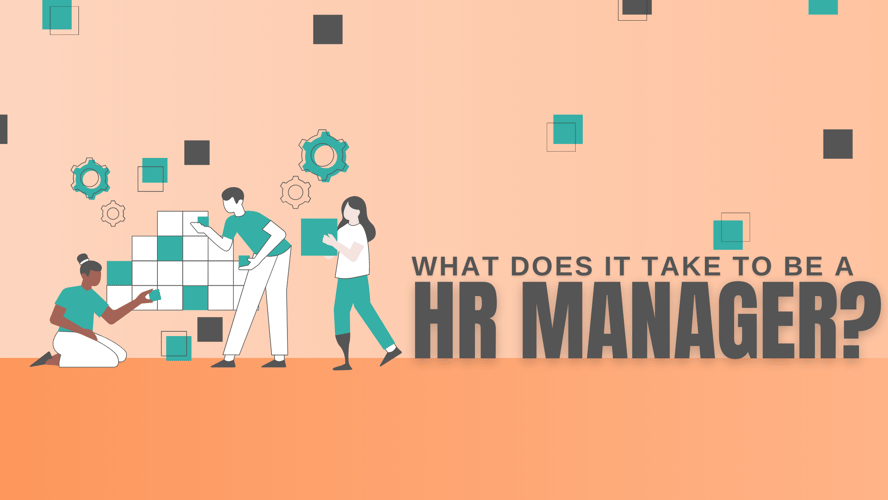Hiring has a big problem and it begins in HR.
As employment practices have evolved and functions have become centralised, far too many companies have permitted “Human Resources Mission Creep” to become standard. Mission creep means a gradual shift in objectives or responsibilities.
In HR, it means that over time, human resources professionals have often been placed in the uncomfortable and ineffective position of being the primary, sometimes sole, judge and coordinator of the hiring process.
HR Mission Creep adversely affects the hiring process. It costs companies a lot of money through increased, and inevitable, job churn as a result of bad hires; it spreads a sense of powerlessness and exclusion from important decisions across an organisation; and it makes management wonder what their team, or themselves, is doing wrong. After all, each time you hire the wrong employee, you can be stuck with a long-term liability; and each time you lose an employee, you’re looking at 6 to 9 months worth of that employee’s salary to rehire, retrain and regain the productivity you’ve just lost.
First Things First. It’s Not HR’s Fault.
Make no mistake, I’m not bagging human resources here. HR is critical to most organisations. A great human resources professional can deliver incredible organisational value well beyond their job description. But an unfortunate trend that no one seems to want to talk about has developed, and it needs to be addressed.
This trend sees HR so deeply involved in hiring decisions that other voices and critical inputs are not being heard, and HR gets hurt too because instead of being able to carve out a seat at management’s strategic table they become merely functional. Truth be told, we’ve heard this from the best HR professionals who know it’s happening, and really wish it wasn’t. After all, in many cases they’ve been given the hiring remit on top of all the other things they have to do and they naturally resist giving it up for fear of looking lazy or irrelevant to management. This is a territorial question, but this border marking is probably hurting your organisation.
What’s Going On And Why Is It So Bad?
It’s actually very simple. First, let’s look at the fundamentals of what an employee really is. An employee is a human being with a certain skill set who will be performing work within a very specific context. Three things are especially key here: a human being (a personality); skill set (knowledge/tools); and context (the other human beings and the place that will surround this human being).
Given this, you might assume that the hiring managers, the people who know best what kind of personality and knowledge they need in this context, would be the people involved in the hiring from Step One. After all, they’re the ones who will be working with this person, usually in the same location. They typically share similar knowledge bases or at the very least will share similar work objectives, and very often, as is the case with many managers, they’ve been there themselves and know what to look for in a candidate. In other words, they’ve know what they need in an employee better than anyone else.
Why Are Hiring Managers Being Left Out?
Except this isn’t what’s happening. Instead, HR is informed of a vacancy, goes to a file searching for a job description template, finds something generic, and posts the job. When the deluge of CVs arrive, this same person, who —don’t forget— probably has no direct knowledge of the role, then works their way through this pile, trying to somehow create a short list of candidates who they can present to the hiring manager.
What’s worse is that time-poor HRs often turn to Google to generate or update job descriptions when they don’t have them handy —talk about turning a process that should be custom into an information-poor misadventure.
And it’s a misadventure that is so common that even as we were writing this post, we heard this exchange in our building’s lobby:
Person 1. That new one is hopeless she has no idea about this job.
Person 2. Yeah, recruitment did a really bad job explaining the role to her.

Learn From The Best: More Information Is Better.
That may be an anecdote, but there have been a wealth of studies in recent years analysing the hiring process to find what makes a good hire. One clear finding is the need to develop as full a picture of the candidate as possible for the people who that candidate will actually be working with. Google is an expert at this and is known for its superb hiring practices which include artfully combining structured interviews with cognitive and work sample tests. Their aim is to understand as much as possible in advance about how a particular candidate will actually perform in the workplace.
It’s no surprise that a company that has distinguished itself as our world’s data and information leader —not to mention the world’s most valuable brand— would want to know as much as possible about job applicants.
However, it is a surprise that the average company, existing in a time when technology and culture have converged to prize more and better information, wouldn’t strive to deliver the best possible informational outcome in its hiring process.
Three Things You Can Do To Change How You Hire Right Now.
So if this needs to change —and it does— what does that change look like?
Step 1. HR must move from being a controller of the hiring process to an enabler of the company’s many voices and inputs. HR’s most important role is as a safeguard of best practice, not an expert on job fitness.
Step 2. Make room at the table for the hiring manager right from the very start. This involves ensuring that the right people are engaged not only to create the job brief, but even generate the short list.
Step 3. Technology and new hiring protocols exist to help make this change today. Intelligent and flexible recruiting platforms can allow hiring managers to dispense with generic HR templates and customise powerful job briefs, setting the stage for efficient and fruitful applicant outcomes. Sophisticated analytical approaches and smart interviewing re-enforce the likelihood of finding the perfect fit and eliminating churn.

Need More Inspiration To Change? Learn From Ben Darwin.
For anyone who wants to debate the value of putting a renewed emphasis on a quality, human- (not process-) based hiring approach, it’s worth taking a look at Ben Darwin.
Darwin, the former Wallaby tight end prop, has become famous for his focus on cohesion. Darwin analyses how each potential player will fit into the team, often downplaying individual talent over the individual’s ability to connect to the whole. For Darwin, who has studied hundreds of teams and thousands of players, only effectively joining the dots of the individual to the team in which that individual will perform can guarantee success.
Sound familiar? This is all about making sure that those who understand a job’s requirements and its context are made an central part of the hiring process from beginning to end.
To recap: if any of the above sounds familiar, it’s time to change. Change is about empowering your organisation to hire better, there are clearly defined ways to do this, and best of all, you can start today.





Blog comments